UGC (short for « User Generated Content ») is a marketing term that refers to any content created by a brand’s users or customers. 🤩 If properly mastered, this type of content represents an undeniable added value to your marketing strategy.
User Generated Content Definition
User-generated content (UGC) refers to all content created and published by a brand’s users on the Internet. 👉 It forms part of a company’s content marketing strategy, and is an excellent indicator of the quality of a company’s products or services in the eyes of customers.
When we talk about « User Generated Content », we mean all the content that users themselves create, and are therefore distinguished from content linked to a “Brand Content” strategy because they are produced on the consumer’s initiative, independently of the brand. 🤔
It’s also a different kind of content to « Influencer Marketing » because the latter involves a positive action by the brand to support an influential personality, often accompanied by a reward (gifts, compensation…). In this case, it’s paid UGC content. 🎁
In all cases, this type of content is an informal practice: so, a customer in a restaurant posting a photo of their meal on Instagram 🍝 or a web user discussing a product or service on a forum, are both creating User-Generated Content.
UGC is part of the content a company uses to gain visibility, enhance its reputation and encourage conversions, it’s becoming an integral part of a company’s marketing strategy. 💥
If you want to find out the best time to post on Instagram, read this article! 👈
What types of UGC content are there?
There are two main types of UGC content: organic and paid. 🤑
In both cases, user-generated content is available in text, photo and video formats. 🎥 This content is published in various contexts.
Organic UGC:
Organic UGC 🌱 is content that your real customers share of their own free will.
It’s the most authentic type and the one you naturally expect to see from your customers. 🥰
1. Customer Reviews and Testimonials
Customer reviews may be requested by brands after a purchase via a satisfaction questionnaire, or they may be spontaneous. 👏
Testimonials have an important value in the eyes of the public, as they come from real users of the product or service. 🧐 Consumers frequently refer to customer review platforms and sites like Capterra, as well as Google ratings and reviews, to validate or not their purchases.
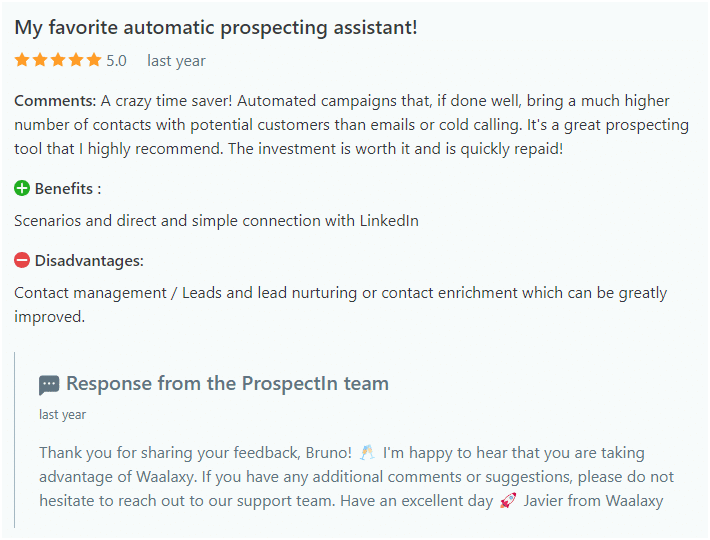
2. Information Content
Blog posts, podcasts, Wiki pages or forums can also be UGC when they quote your brand, products or services, or when they are integrated into your website. ✨
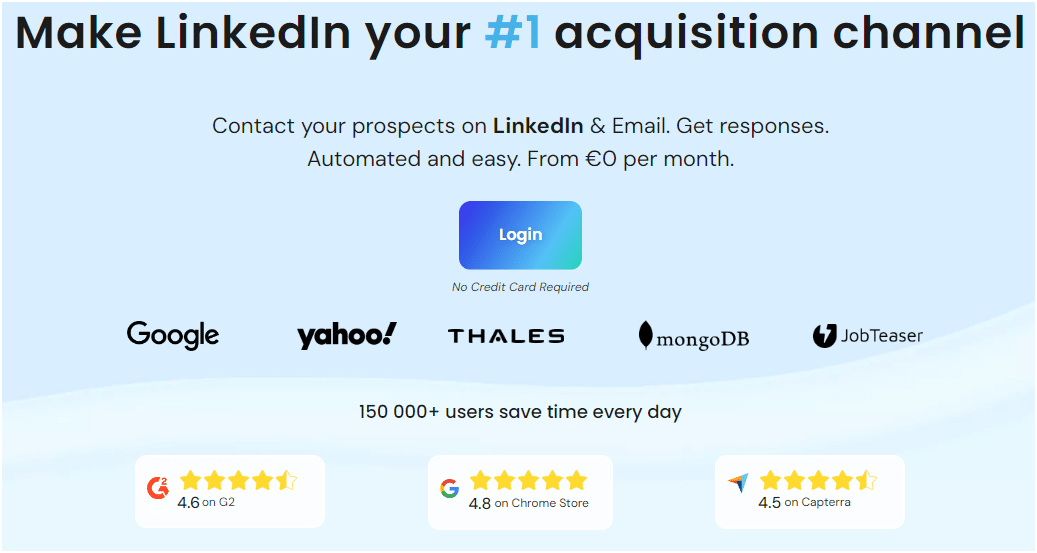
3. Content on Social Networks
Citing brands on social networks: consumers spontaneously mention brands on social networks. 😍 For example, a customer talking about their experience with a brand. This is UGC that can generate comments and shares, so it affects brand perception.
Thus, comments on brand publications: under a YouTube video, under a Facebook post or even under a blog article, are User-Generated Content. 🗣️
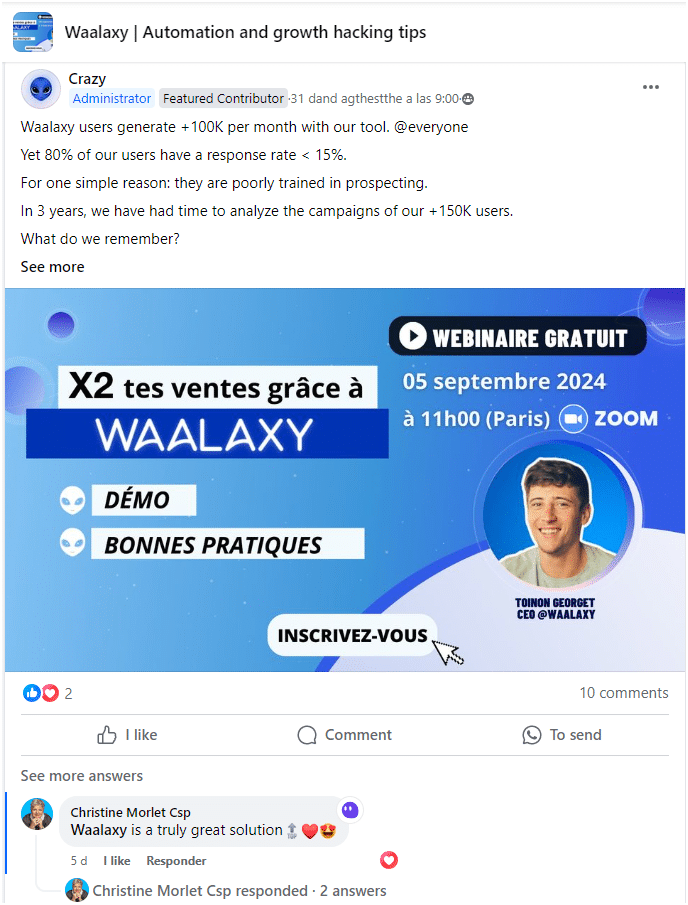
4. Photo Sharing
Photos of your brand’s products: like brand mentions, product photos on social networks are also high-value UGC, as they have the potential to go viral. 📸 Since they’re also spontaneous, web users trust them willingly.
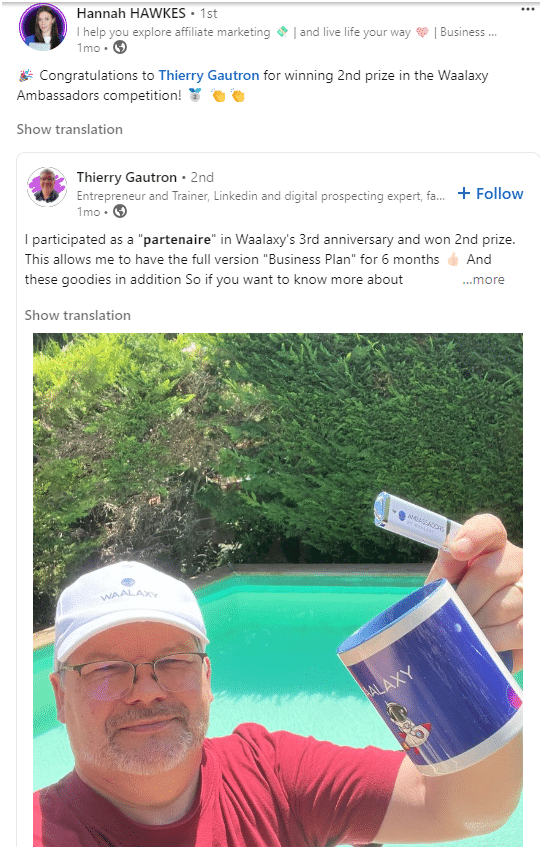
5. User Generated Content Videos
Videos presenting your brand: the virality of videos on social networks is even more important. 🦠
When someone films themselves using or explaining how your product works, the video has the potential to reach a wide audience. 👀 Internet users often discover products through the eyes of consumers like themselves.
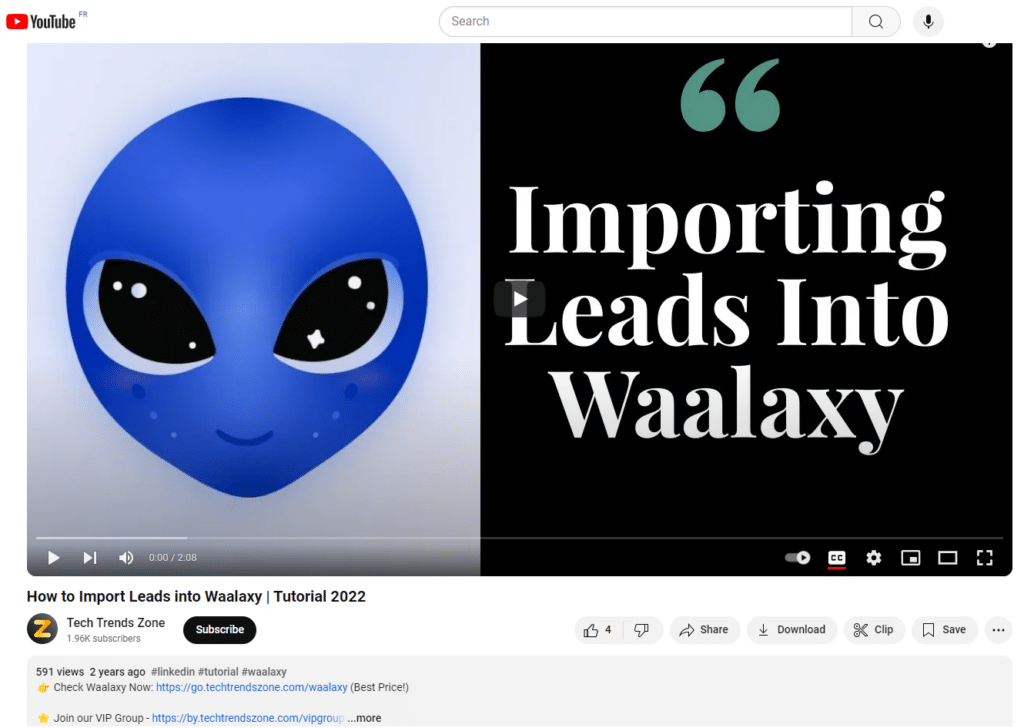
Paid UGC:
The other main type of user-generated content (UGC) is paid content. 💰 It’s becoming increasingly popular, especially for new brands that want to share this type of content, but don’t yet have enough customers sharing photos, reviews, etc.
Paid UGC content is often created by content creators. 🤗 However, it’s usually just as sincere as classic user-generated content.
You can contact UGC content creators, through a platform like Fiverr or Upwork. ✍️ However, if your brand already has fans, creators might approach you directly.
Either way, once you’ve struck a deal, you can take the content they create and share it on your website or social media accounts as user-generated content. 👍
Pro question: why do users create favorable content for a brand? 🤔 In most cases, this approach reflects a need for social connection: it’s about sharing experiences or expressing oneself on a specific subject, with the aim of attracting attention and getting people to react.
But there are also external motivations, where brands reward the creation of UGC as part of games, competitions, or challenges (we’ll see in this article that this is part of the strategy for using this type of content). 👇
How to create User-Generated Content?
In this section, we’ll look at some of the key elements of User-Generated Content 😉
1. Establish Communication Objectives
First of all, brands need to ask themselves what results they want to achieve from their UGC strategy, thus achieving clear and precise goals. 🏹
However, brands need to be careful about which metrics they want to measure. 📏 Indeed, relevant and easy-to-measure objectives should be prioritized, such as engagement rates or conversion rates.
2. Be Transparent with your Audience
Consumers are looking for authenticity in the content offered by users talking about certain brands. 🤔 So it’s important that UGC content remains authentic.
Users shouldn’t submit disguised advertising content, 🙈 this would negatively affect the brand’s image. If it’s too obvious, then consumers may decide to buy the product from a competitor. 😥
3. Create Original Content
Potential customers consume an enormous amount of content on the web, it’s a never-ending spiral… 🌀
So it’s important for brands to differentiate themselves from their competitors by offering original content that appeals to their target audience. 🎯
This content will be more likely to attract their «buyer persona» directly and therefore, it will be more likely to generate shares. 👍
4. Diversify Formats
Diversifying the formats of your UGC strategy will extend the reach of your content and encourage exchanges between web users. 📣
Consumers who buy products online frequently need to examine the product via various platforms, before finalizing the transaction. 🔍
It’s therefore important to provide them with photos or videos to reassure them and create more engagement. 🤳 Also, your presence on social networks counts a lot, as it gives your brand legitimacy.
5. Measure the Engagement of each piece of content
Use measurement tools to assess the impact of your UGC strategy and learn from your mistakes and successes. 👏
Measure lead counts, conversion rates, engagement rates and SEO impact to determine which formats and themes perform best. 💥
Google Analytics, Google Search Console, Ahrefs, among others, are particularly effective tools for tracking the performance of your content. 📊
How do you integrate UGC into your marketing strategy?
Now, let’s take a look at the actions you can take to integrate UGC into your marketing strategy. 🧐
1. Ask users to Mention your Brand
Here are a few tips to get your customers or followers to mention your brand: 👇
- When a brand republishes UGC photos and videos, more customers are encouraged to publish the photos and videos in turn. 😏 In fact, customers hope their content will be republished because it’s a pleasure to have their content seen by the entire audience of a brand they like.
- Instagram giveaways, for example, are a very effective way of getting user-generated content. Internet users are genuinely motivated to win, and don’t hesitate to share contest information widely. 🗣️
- Finally, a particularly strong marketing effort will result in user-generated content. 👄 Internet users tend to react quickly and massively to «buzz marketing». The brand is then placed front and center by the user, as in the case of Burger King’s divisive tweets. 🍔
2. Promote your Customer Reviews in the right places
Customer reviews are a very useful UGC for consumers in the final stages of their buying cycle. 🛒
For brands, UGC is a valuable selling point. 🪙 Various practices are effective in increasing the number of customer reviews and their visibility:
- Send an e-mail after a purchase, then send a follow-up e-mail if necessary, to gather customer feedback.
- Offer a quick satisfaction survey, perhaps in the form of a simple smiley face, so as not to frustrate customers. 😊
- Distribute customer reviews on as many media as possible: «landing pages», online comparison tools, or even Google business listings.
- Respond to negative comments as well as positive ones, to show your credibility. 💪
3. Monitor your User-Generated Contents
Internet users are a priori well-intentioned. 🙏 They are aware that by publishing content about a brand, consumers will base their judgment on it.
In theory, UGC is objective and impartial. However, some reviews are sometimes posted by Internet users with malicious intent. 👿
Fake customer accounts, disloyal competitors or even spam: this type of user-generated content needs to be removed. ✔️
Indeed, a company’s reputation is literally at stake. 🎲 So, monitoring and moderating UGC is important to maintain the public’s trust in you.
4. Use UGC as a Marketing Tool
UGC can remain visible on the original medium: on users’ social networking accounts, on customer review platforms, or in comments on YouTube videos, for example. 🎥 However, UGC can also be «borrowed» from its author as a marketing argument for a brand.
To achieve this, it’s important to: 👇
- Choose User-Generated Content with high added value and in line with your brand’s content plan. 📅
- Request permission from the author of the text, photo, or video before using it.
- Reassure your audience that UGC content comes from real, non-paying users.
5. Mention your Business Partnerships
Commercial partnerships are a form of UGC like any other! 🏅 However, they don’t respect the UGC objective of disseminating objective, unbiased observations about a brand.
If you use influencers or work with partners in a co-marketing approach, it’s important to mention this in your publications. 🪶
In any case, this approach is interesting, as it gives a new look at your brand by showing who your partners are, 👁️ as well as reaching new audiences.
How to win customers with UGC?
To win customers through UGC, encourage your existing customers to share their positive experiences online.
Use hashtags, run contests and offer incentives to promote content creation. 🧲 Highlight this UGC on your platform to demonstrate authenticity and increase customer satisfaction.
Finally, actively respond to UGC content to strengthen engagement and community. 💡 Analyze feedback to improve your products and services. 👂 These strategies convert engagement into sales, leveraging the trust created by UGC.
What’s more, by integrating UGC into your sales pitch and thanks to automation tools like Waalaxy, 👽 you can launch a prospecting campaign on LinkedIn or by e-mail.
User Generated Content Examples
Here are some examples of LinkedIn messages you can send to your prospects, using the User Generated Content method. 👇
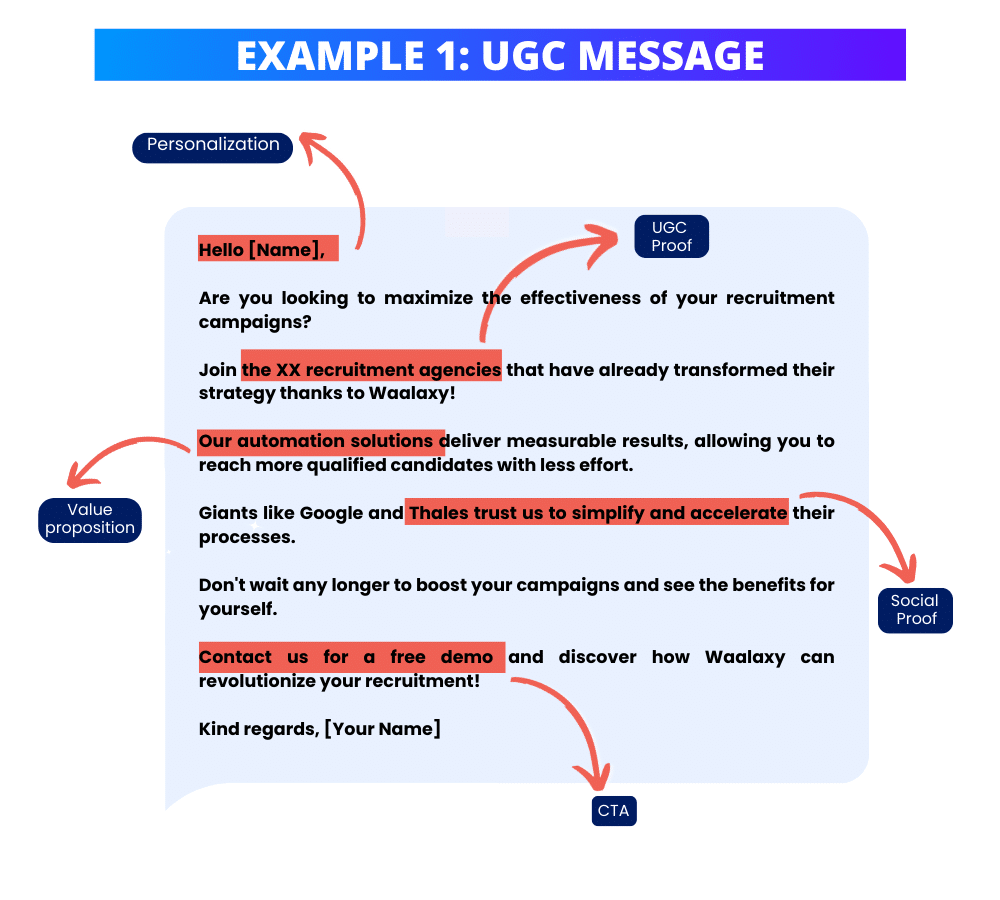
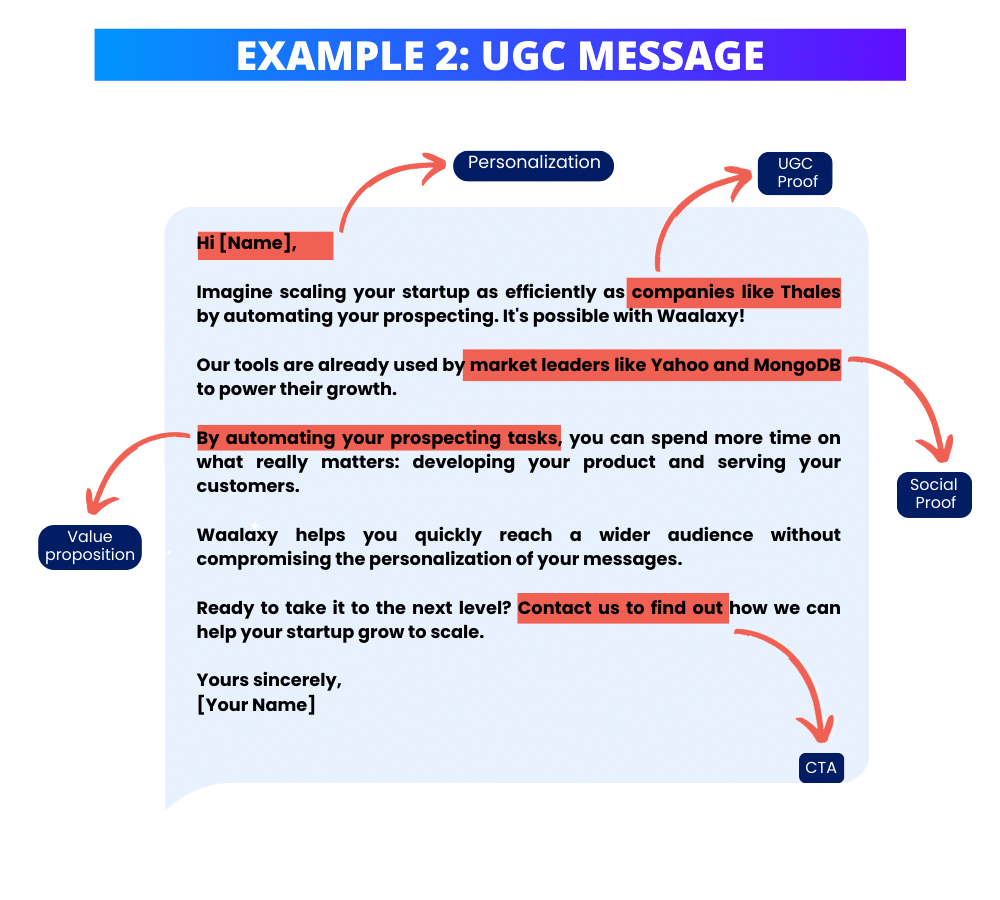
Tailor your sales pitch by highlighting trusted brands or user reviews in your prospecting message. 🪄
Recap: What is UGC?
User-generated content (UGC) is a term used to refer to content freely created by end users rather than by brands or companies themselves. 👏
This content can take many forms, such as videos, photos, blogs, tweets 🕊️ or reviews and comments posted on social networks and other online platforms.
UGC is particularly valuable for brands 💎 as it offers an authentic and engaging perspective on their product or service. 👉 It’s often considered more trustworthy and reliable by other consumers, since it reflects real, unfiltered customer experiences.
Companies are leveraging UGC by integrating it into their marketing campaigns to increase engagement, build trust and improve customer loyalty.
What’s more, UGC can help extend a brand’s reach and increase its influence by encouraging users to share their content with their own networks, thus acting as brand ambassadors. 🤗
In short, user-generated content is a powerful tool that humanizes brands and stimulates community engagement, while delivering fresh, relevant content to prospects and customers. 🏹
FAQ : How does UGC work?
What’s the difference between “User-Generated Content” vs “Brand-Generated Content”?
The «User-Generated Content» refers to any content created by a brand’s users, such as reviews, photos, or videos. 👉 This type of content is authentic and can increase consumer trust.
On the other hand, «Brand-Generated Content» (BGC) is created by the brand itself to promote its products or services. 📣 This content is often more refined and commercial.
Both forms of content have their place in a marketing strategy, with UGC stimulating consumer engagement and BGC controlling the brand message.
How does Influencer Marketing work?
Influencer marketing involves working with well-known social media personalities to promote products or services. 🌟
Brands partner with influencers who share similar values and have an engaged audience. 🤝 Influencers create content that showcases brands naturally and authentically, reaching their audience in a more personal and direct way than traditional advertising.
This approach can increase brand awareness, generate traffic and sales, and enhance brand image through association with respected and followed personalities. 🔗
How can I find UGC Content Ideas?
To find UGC content ideas, 🧠 encourage customers to share their experiences with your product or service via contests, specific hashtags or incentives such as exclusive discounts.
Feature testimonials from satisfied customers, ask for opinions, and create participatory challenges or campaigns. 🧧 Use live events, Q&A sessions and influencer collaborations to boost engagement.
Analyze marketing trends to adapt your calls to action, guaranteeing maximum participation among your target audience. 🎯
That’s it, 👏 you know how to use User Generated Content for your marketing strategy!









